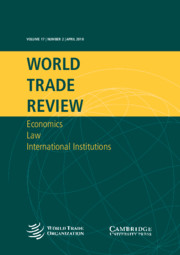
Crowley, M. A.
Tuna-dolphin II: a legal and economic analysis of the appellate body report
World Trade Review
Vol. 13(2) pp. 321-355 (2014)
Abstract: In Tuna–Dolphin II,2 Mexico challenged a US measure that monitored and enforced a private voluntary label on tuna, the ‘dolphin-safe’ label. While Mexico made some polemical claims that the US measure was ‘coercive’ and was not in the spirit of international cooperation with respect to dolphin conservation under the Agreement on the International Dolphin Conservation Program (AIDCP),3 a regional intergovernmental regime for dolphin protection, its more precise legal claims focused on two aspects of the US measure. First of all, as interpreted by the US Courts, the US legal framework required the prohibition of the use of the label on tuna marketed in the United States in any instance where the tuna was caught by a method involving encircling or setting upon dolphins. This method is attractive to tuna fishers in the Eastern Tropical Pacific (ETP), where Mexican boats fish for tuna, because in that region dolphins are known to swim with tuna. Mexico argued that by not allowing tuna fished in this way to be certified as dolphin-safe, even if no actual dolphin was killed despite the encircling or setting upon of dolphins, the United States violated 2.1 of the Agreement on Technical Barriers to Trade (TBT). Since this was a method typically used by Mexican fishers, not allowing it to qualify for ‘dolphin-safe’ labelling de facto limited the competitive opportunities for Mexican tuna in the United States.
Author links: Meredith Crowley
Publisher's Link: http://journals.cambridge.org/action/displayFulltext?type=1&fid=9283806&jid=WTR&volumeId=13&issueId=03&aid=9283802&toPdf=true ![]()
